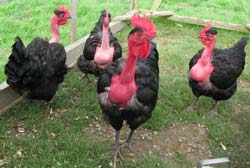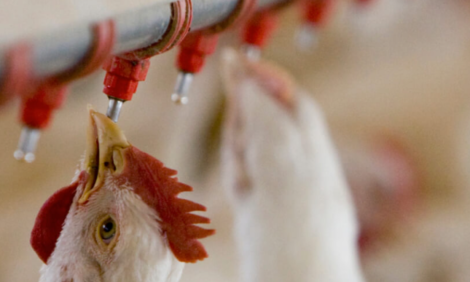



Natural Mutation Helps Chicken's Heat Tolerance
SCOTLAND, UK - Its head looks like a turkey's, its body resembles a chicken's. Now scientists at The Roslin Institute can explain why one of the poultry world's most curious specimens has developed such a distinctive look.The Transylvanian naked neck chicken – once dubbed a 'churkey' or a 'turken' because of its hybrid appearance – has developed its defining feature because of a complex genetic mutation.
Researchers at The Roslin Institute at the University of Edinburgh found that a vitamin A-derived substance produced around the bird's neck enhanced the effects of the genetic mutation.

(Photo: The Roslin Institute, University of Edinburgh)
This causes a protein, BMP12, to be produced, suppressing feather growth and causing the bird to have an outstanding bald neck.
The findings could help poultry production in hot countries, including in the developing world, because chickens with naked necks are much better equipped to withstand the heat.
The discovery also has implications for understanding how birds – including vultures – evolved to have featherless necks due to their metabolism of vitamin A selectively in neck skin.
Transylvanian naked necks, which are thought to have originated from the north of Romania, have been around for hundreds of years and were introduced to Britain in the 1920s.
The research, published in the journal PLoS, was funded by the Biotechnology and Biological Sciences Research Council.
Dr Denis Headon, who led the research at The Roslin Institute, said: "Not only does this help our understanding of developmental biology and give insight into how different breeds have evolved but it could have practical implications for helping poultry production in hot countries including those in the developing world."
Researchers analysed DNA samples from naked neck chickens in Mexico, France and Hungary to find the genetic mutation. Skin samples from embryonic chickens were also analysed using complex mathematical modelling to identify the genetic trigger.
Further Reading
| - | You can view the full paper in PLoS by clicking here. |








